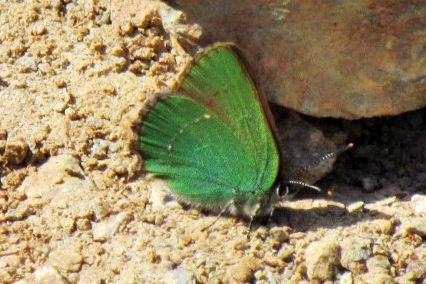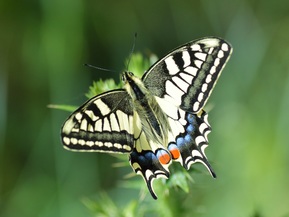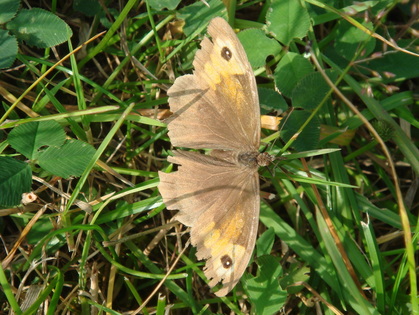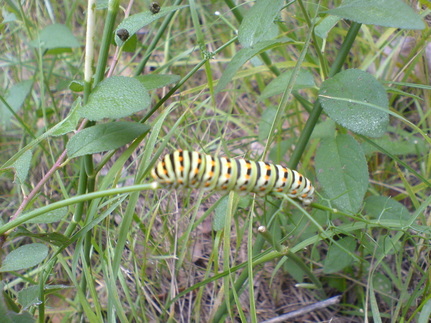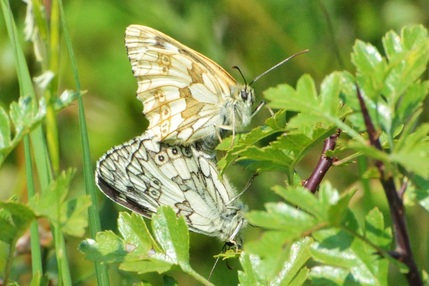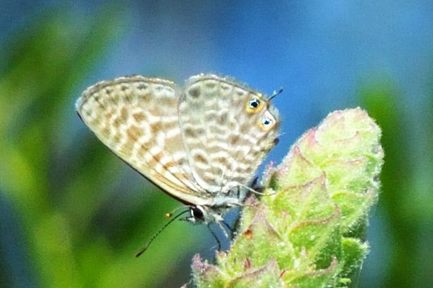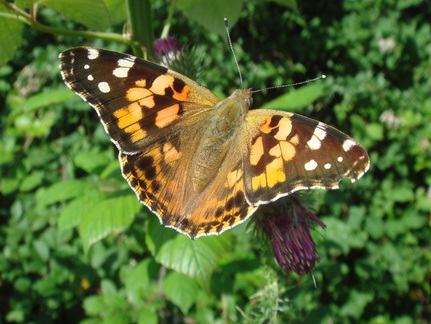The Chinese philosopher Zuangzi wrote about 2,500 years ago "I dreamed I was a butterfly, flitting around in the sky; then I awoke. Now I wonder: Am I a man who dreamed of being a butterfly, or am I a butterfly dreaming that I am a man?".
More recently Dolly Parton sang "Love is like a butterfly, as soft and gentle as a sigh...." - all of which shows that butterflies are quite special and appeal to everyone's imagination. Someone said to me the other day that it was a shame such beautiful creatures only live for a day - which set me thinking. While some insects are as short-lived as this, butterflies are not, so I have written this blog on their lifespan.
Languedoc-Roussillon has some 327 different butterflies, representing about 75% of species which exist in metropolitan France. In size they vary from the very tiny (no bigger than the nail of a little finger) to large (more than 5cm from wingtip to wingtip). As general rule, the larger it is, the longer its life as a flying insect.
This depends on many things and varies greatly. It depends on the size and species of the butterfly, where it lives, and what time of year it became an adult.
If there is an average life span of an adult (as a flying insect), it is about one month. Although the smallest will usually only survive for about one week, some of the larger ones can live for about nine months.
Butterflies are cold-blooded creatures, so climate and temperature make a difference to length of life. For instance, if the egg is laid just before cold weather, it will stay in egg-form until the weather warms, when the caterpillar will emerge. If the butterfly is an adult and it starts to turn colder (and it does not migrate south), it will hibernate somewhere until the weather warms. What this means is that the insect could technically live for many months past the average life span, dependent on climate and what stage of life it is in when winter comes.
During their lives as adults, they suffer the slings and arrows of misfortune. They can become rather tatty and often their wings become quite ragged, probably due to unfortunately close encounters with birds.
All butterflies undergo "complete metamorphosis." In order to grow into adults they go through four stages, each with a particular objective:
eggs hatch into caterpillars
caterpillars need to eat a lot
pupas house the metamorphosis stage
adults reproduce.
Dependent on species, climate and habitat, the whole cycle may take anywhere from one month to a year.
Egg
A butterfly starts life as a very small, round, oval or cylindrical egg, the shape being dependent on the species. They are usually laid on the leaves of plants.
Caterpillar
The egg hatches and the caterpillar emerges. The egg is always laid on the type of leaf the caterpillar will eat – each species liking only certain types of leaves.
They grow quickly. When born, they are small; when they start eating, they grow rapidly. Their exoskeleton (skin) does not stretch or grow, so they moult several times.
As soon as a caterpillar is fully grown it turns into a pupa, also known as a chrysalis.
Within this the old body parts undergo a metamorphosis to become the adult butterfly.
Adult
When it emerges, both of the wings are soft and folded against its body. As soon as it has rested, it will pump blood into the wings in order to get them working – and then fly. Usually within a three or four-hour period, the butterfly will master flying and will search for a mate in order to reproduce.
In this fourth and final stage they are constantly on the look out to reproduce. The butterfly life cycle then starts again.
Some species, including the Peacock, the Red Admiral and the Small Tortoiseshell, hibernate as adults. On warm winter days they will sometimes be seen flying or basking in the sunshine.
Most survive the winter as eggs, caterpillars or pupas; the Green Hairstreak and the Swallowtail above, for instance, both hibernate as a pupa, the Green Hairstreak usually among stones, leaves or moss at the base of trees or shrubs.
How many broods?
Some butterflies are univoltine, meaning one brood or generation each year. Others are bivoltine or even, like the Painted Lady (picture below), trivoltine.
Those with a short life-cycle can produce from one to three generations in a year. The Green Hairstreak (above) has only one and is normally seen flying between March and June. At the opposite end of the scale Lang's Short-tailed Blue (Leptotes pirithous), also a small species, is polyvoltine, has a complete cycle of 4-8 weeks and can be seen flying from February to October.
This happens to a few species. The best known is probably the Monarch which moves in large numbers northwards from Mexico into the USA each year.
Better known in Europe is the Painted Lady (Vanessa cardhui). This remarkable butterfly seems to follow a 10-year cycle of massive population explosions, the last one being in 2009. Following a huge springtime emergence in N. Africa millions of individuals head north into Europe including UK, sometimes travelling over 6,000 kilometres from their point of origin.
For more on this phenomenon see the list of useful websites below.
In Conclusion
It seems to me that there have been fewer butterflies around our area this year. This view is completely subjective and it could just be that I have been in the wrong place at the wrong time. I am certain, however, that the number of Marbled Whites (Melanargia) has been reducing each year for a number of years; they used to be plentiful but this year (2015) they have been quite scarce. I don't know why.
Having been inspired to write this blog by comments about how long butterflies might live, subsequent research has shown me even more how fascinating these beautiful insects are and how astonishing and complex nature can be.
Please follow this link to go to my gallery where you can see some of the delightful butterflies found in this region.
Information can be found on-line in the following places, among others:
_
www.thebutterflysite.com
atlas.libellules-et-papillons-lr.org
http://www.leps.it/
http://butterfly-conservation.org/5183-2342/painted-lady-migration-secrets-revealed.html
and of course Wikipedia.
